Sleuthing Out Lutherie: Tools to Build On with Jayne Henderson and Rachel Rosenkrantz
So, you’re interested in building your own guitar, but the idea of acquiring the experience and tools seems way too overwhelming. Fear not! She Shreds spoke with two prolific luthiers, Jayne Henderson and Rachel Rosenkrantz, about their beginnings, the most crucial tools you will need, and advice for those looking to build.
Jayne Henderson never intended on becoming a luthier. With an environmental law degree from Vermont Law and loans to pay, she asked her father, renowned luthier Wayne Henderson, to build her a guitar she could sell. But her father had a different idea—that she should build it herself. “I had no intention [of building],” Henderson tells She Shreds over the phone from her home in Asheville, North Carolina. “I would see bits and pieces of the process but was never interested. I think because everyone else wanted to, I didn’t want to stand in line for my Dad’s attention.”
Wayne Henderson has been building guitars for 50 years, with clients including Eric Clapton and Gillian Welch, and was awarded a National Heritage Fellowship in 1995 at a White House ceremony. Suffice to say, Jayne learned from the best. “I just thought I would go through the motions and do what he told me, but I didn’t,” she says. “It was the best thing. I got to spend time with him. And it turns out, I’m pretty good at it.”
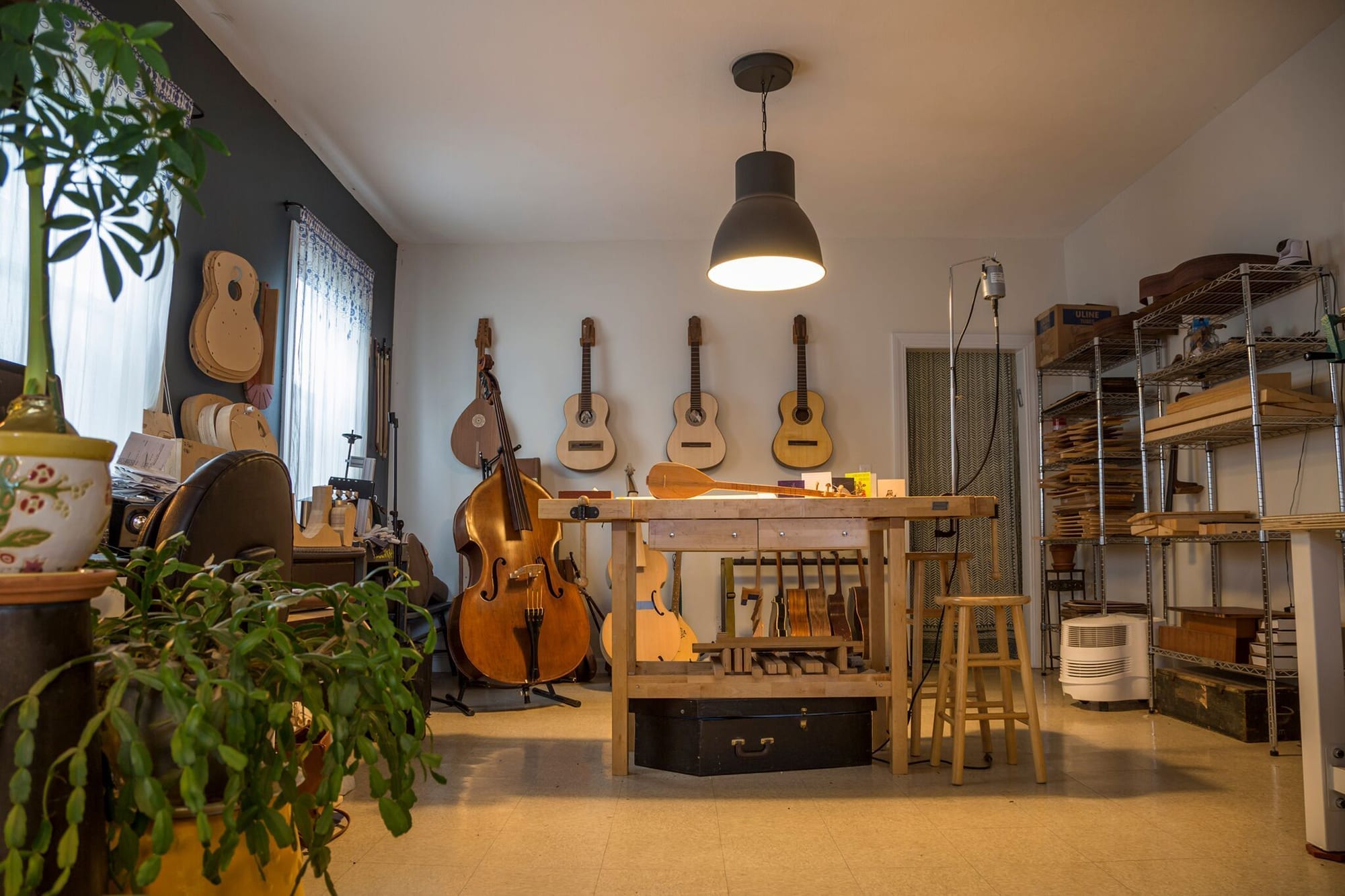
Working with her father every day for a week in his Virginia workshop, Henderson built her first guitar. He would present the materials and tools and guide her as she went along—eventually, she was hooked. “I kept thinking up reasons to work on guitars,” Henderson says. “I loved it more than anything. And now, I can’t wait to go to sleep so I can get up and make something beautiful for somebody.”
Henderson has been building for five years, but she’s still learning. She mentions that in order to build a really stand-out guitar, even the smallest tasks must be done with precision, but some things can only come from experience. “I can hear when you remove enough wood [in the body] that it starts to really sing,” she says. “It will tell you when it’s done, when you don’t have to shave anymore.” She also jokes that the math you learned in high school that you never thought you’d use will come back to haunt to you.
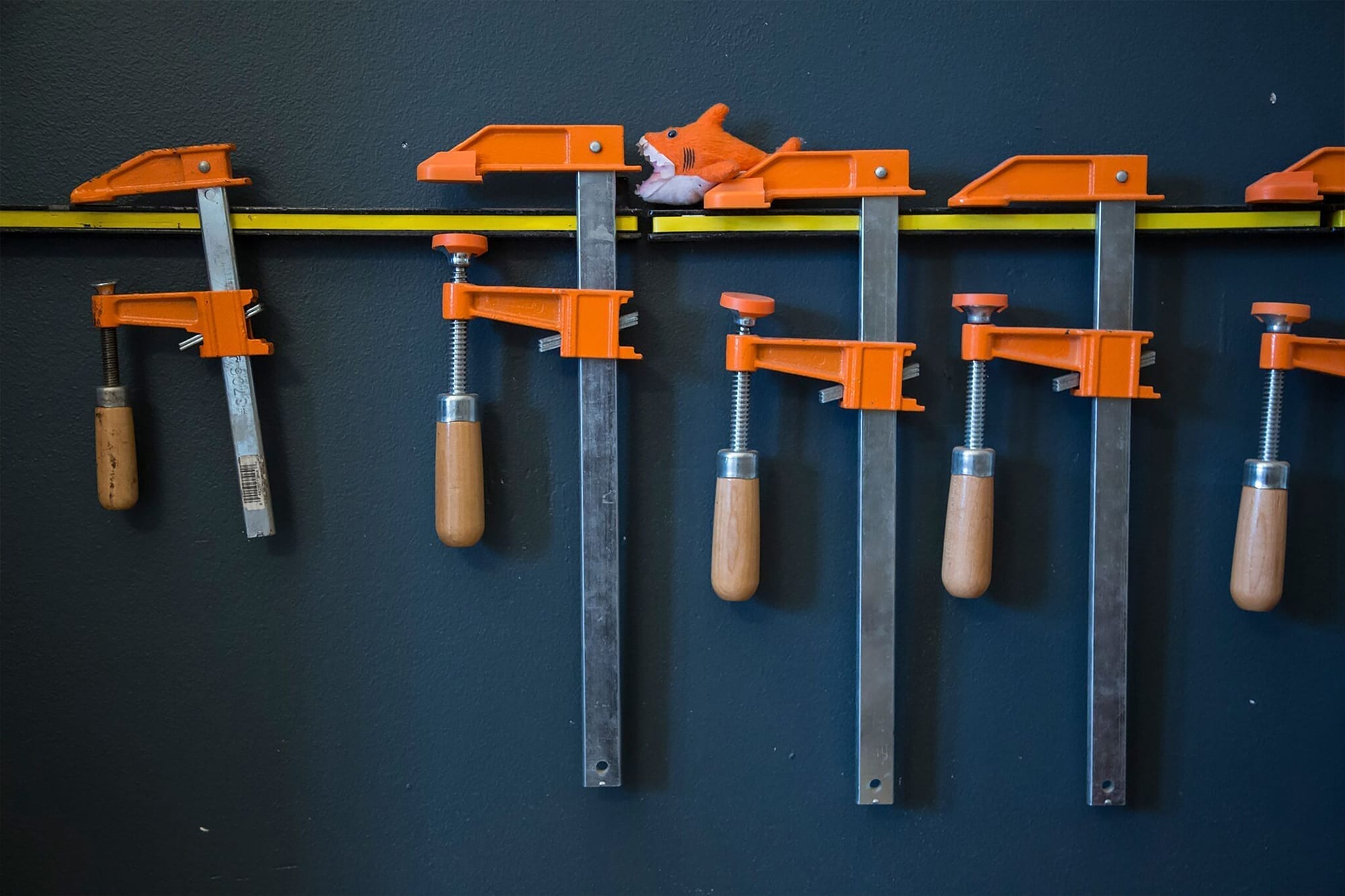
It’s obvious in Henderson’s guitars that she ties together her creative and environmental backgrounds. She mentions that she comes at her work as an artist rather than a player, preferring inlay over the tedious task of making a neck fit into the body—and yet, Henderson is intentional about each step of the process. “George Gruhn told me, ‘Your guitars have a soul in them. It’s not just a bunch of wood stuck together.’ I take the time to pick a piece of wood for a specific person.” And it’s no surprise that she uses only sustainable wood: “I’m a female builder in a world of guys, and most of them don’t consider me a contender. And that’s fine, because one day, when all of their Brazilian rosewood is gone, they’ll be like, ‘Oh, this girl’s been using oak for 10 years now. Dang, we should have gotten in on that because oak sounds just as good!’”
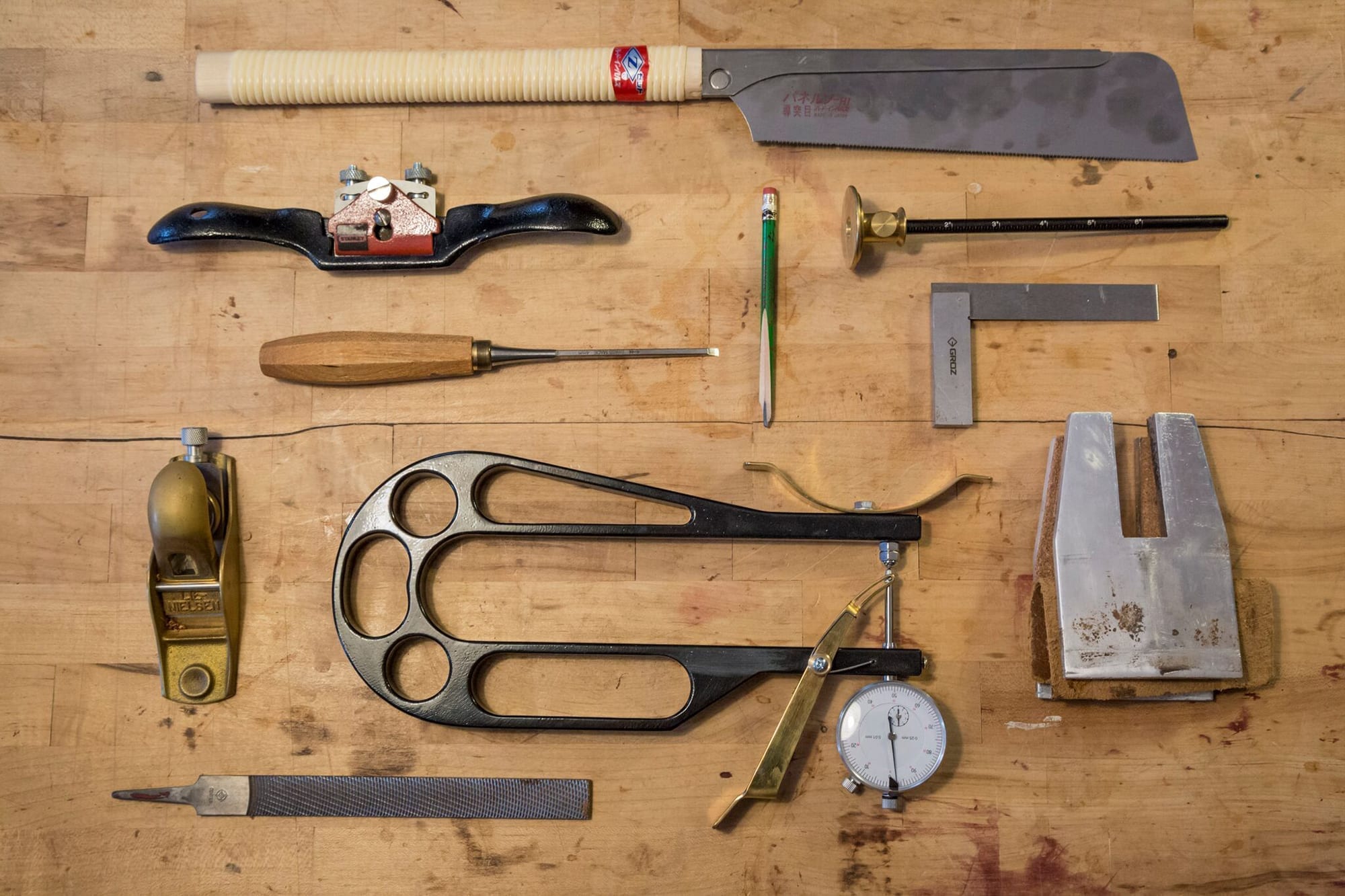
Henderson’s advice for beginners:
BUY A GUITAR KIT: “That way you can get a feel for it. A kit makes it so much easier to see if you’re ready, willing, and able to do it, versus starting totally from scratch. There’s so much you might not have thought of that goes into it. Also, you can see all the parts of the guitar as you put it together.” (See resource list for information on where to purchase.)
BASIC TOOLS: “Start with a hand saw, a sander, and a table saw. C-clamps and hinge clamps—my favorite are the wood cam clamps.”
DO WHAT YOU LOVE: “Do it because you love it, not because it makes you money—you won’t make a very good guitar. I had already spent a lot on a degree, and thought, ‘I probably shouldn’t be [building].’ That doesn’t matter. If this is what you want to do and it doesn’t feel like a job and you can’t wait to get up to do it, then you should do it.”
///////////////////////////////////
While studying design at ESAG Penninghen in Paris, where she was born and raised, Rachel Rosenkrantz walked past the lutherie shop of Maurice Dupont every day to catch the bus to and from school. Best known for his original Gypsy guitar, Dupont’s shop reminded Rosenkrantz of her affection for guitars, but the demand from school didn’t allow her time to play music. She moved to Providence, Rhode Island, to continue her studies as an exchange student at RISD. When she eventually graduated from ESAG Penninghen and started playing music again, she found that she couldn’t stop thinking about lutherie. “Ten years later, if you still want to do it, you should do it,” laughs Rosenkrantz while talking to She Shreds from her studio in Providence. “At the time, believe it or not, I was considered too old to start. I was only 21.”
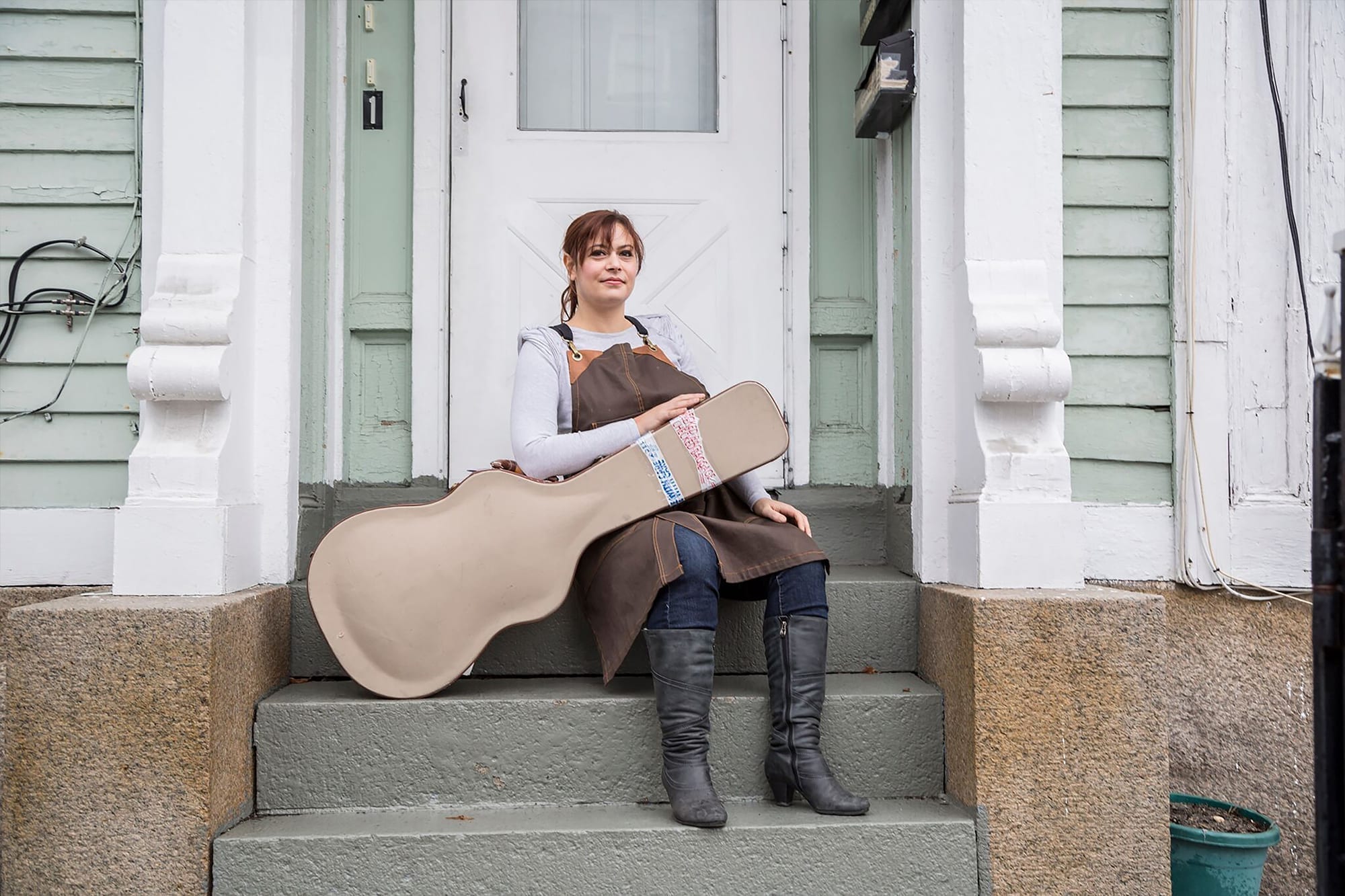
As both a musician and a designer, becoming a luthier was a way for Rosenkrantz to combine the two. In 2011, returning to Providence, she began studying with Daniel Collins of Shady Lea Guitars, one of the few teachers at the time who taught how to build classical guitars. “I believe that with an apprenticeship you can really learn at your own pace,” she says. After quitting her corporate job, Rosenkrantz diligently attended Collins’s class every other day, working through nights and weekends. She went on to share studios with luthiers Otto D’Ambrosio and Zachary Martin, who opened their spaces to her when she was in a pinch for a place to work.
Between 2012 and 2014, using every dollar in her savings account, Rosenkrantz began piecing together her own studio in Providence. One of her main pieces of advice to beginning luthiers is to get your own space and all of your own equipment as soon as possible: “It was great to share space with others and have access to equipment, but to be productive, and efficient, and find a good work groove, you really have to work alone.”
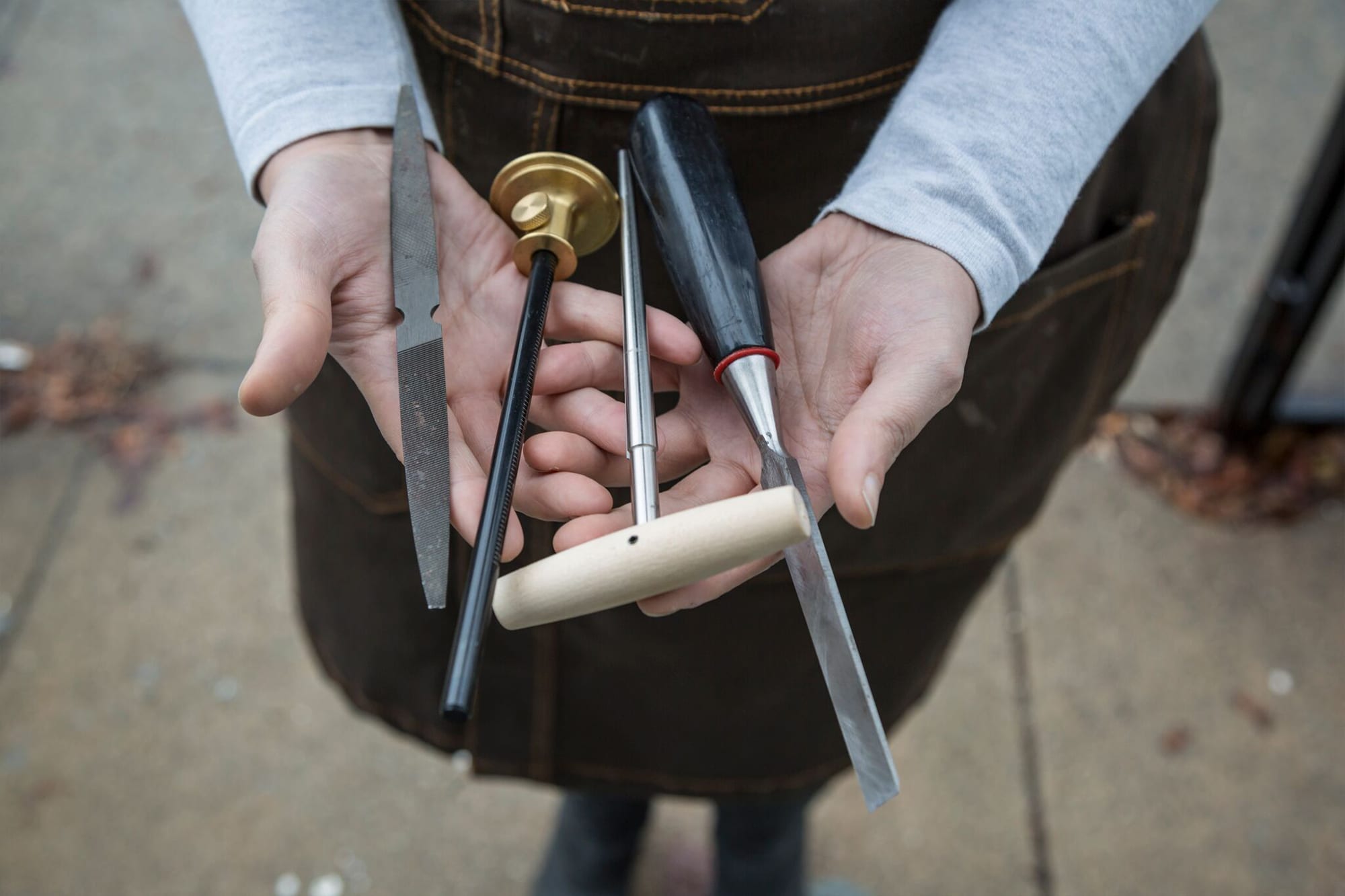
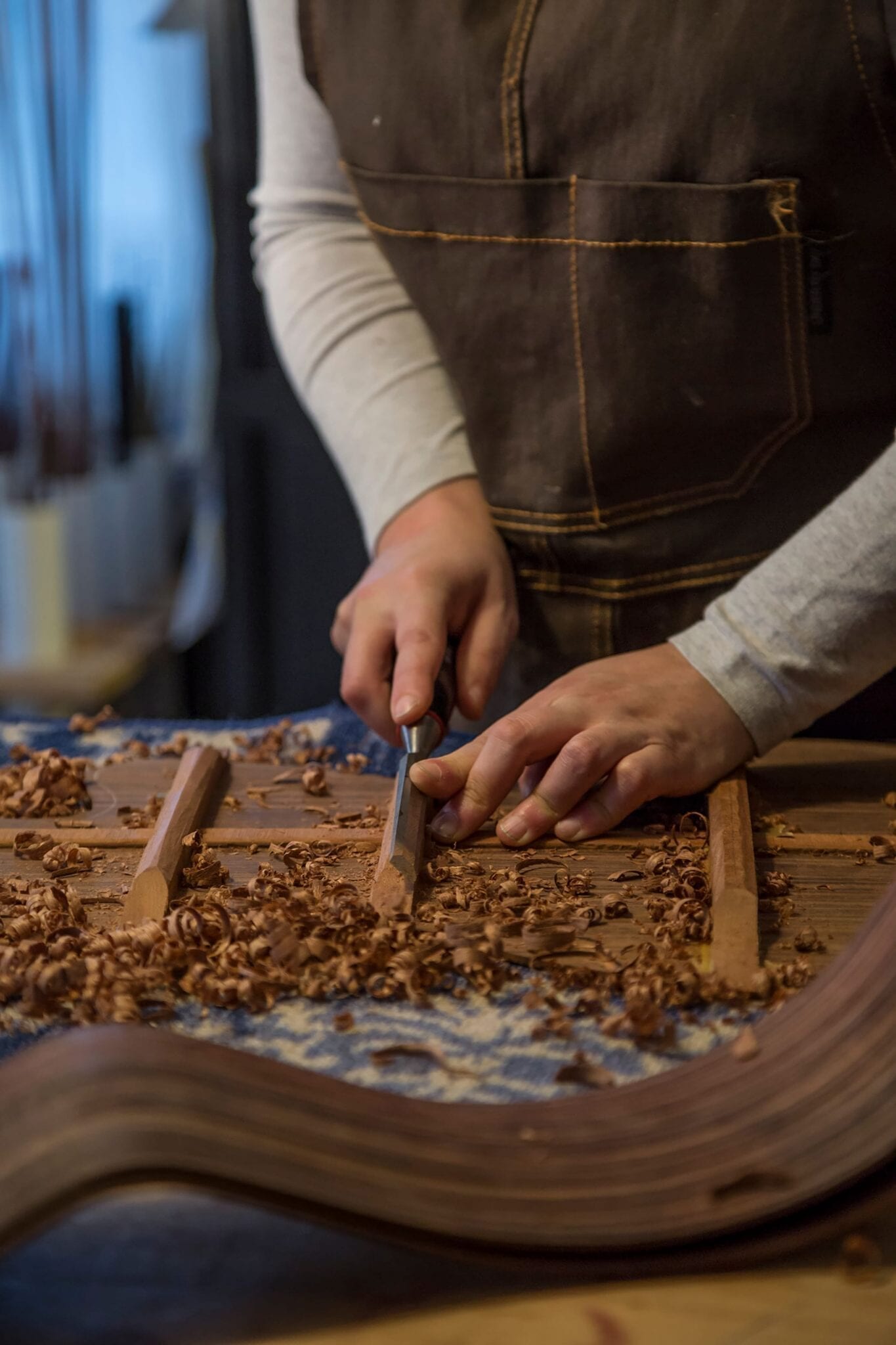
In conjunction, Rosenkrantz also suggests that if you want to build for a living, you need to dive right in. “It’s hard to be prolific and productive if you don’t give it the time,” she says. “It’s a very slow process to build a guitar, and if you’re only doing it every other day, you’re not going to get things done. It’s time consuming. Make sure you have enough savings, enough of a buffer when you start.”
Rosenkrantz has been building for over five years now. Her past work in art and design has been shown in exhibits at the Carrousel du Louvre, the Musée d’Art Contemporain du Palais de Tokyo, and at the Hangaram Museum of Modern Art in Seoul. Her luthier work was featured on the television show Raw Craft with Anthony Bourdain, and she has recently worked with Kaki King to design an affordable, moveable bridge that turns a guitar in a koto (a traditional Japanese stringed instrument). She currently teaches Spatial Dynamics in the Division of Experimental and Foundation Studies at RISD.
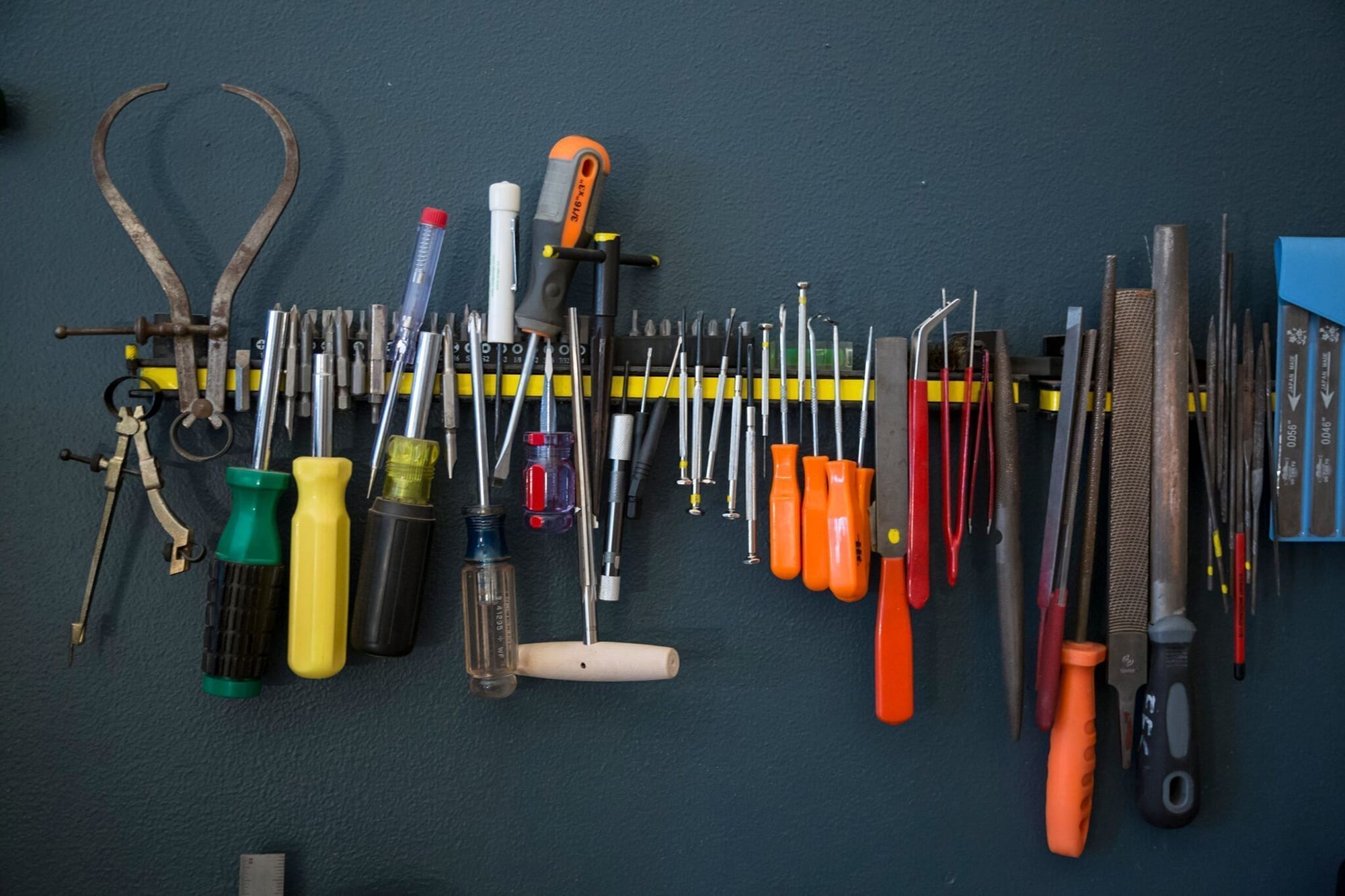
“There’s a lot of us,” Rosenkrantz says of luthiers. “People don’t think there are, but we are a bunch. There’s enough room for everybody. Going to a luthier showcase, you see everybody’s work is different. Don’t doubt, don’t get discouraged. I believe if you don’t do it first, you have to do it better.”
Rosenkrantz’s advice for beginners:
Think with your hands: “Even if you follow a blueprint or process, once you have the wood, you know naturally what it needs to become. Not just thinking with your head, but with your gut. When you have that intuitive knowledge, it’s more than just learning—it’s naturally understanding what the material needs to be.”
Don’t be cheap: “Chisels and handsaws are crucial. If you have to spend the money, those will be the two tools that you need to spend the big bucks on. You can’t fuck around with those.”
Be mindful with your materials: “We know we cannot legally use Brazilian rosewood, yet every year we see pictures of [them] at [guitar] shows. We have to be responsible. There are so many woods that haven’t been explored, and I think it’s time to expand the envelope. Don’t be afraid to try. Be resourceful, mindful, and adventurous.”
Resources:
Stewart Macdonald – http://www.stewmac.com
Luthiers Mercantile International – http://www.lmii.com/
Luthiers Forum – http://www.luthiersforum.com/
Guild of American Luthiers – http://www.luth.org/resources/schools.html
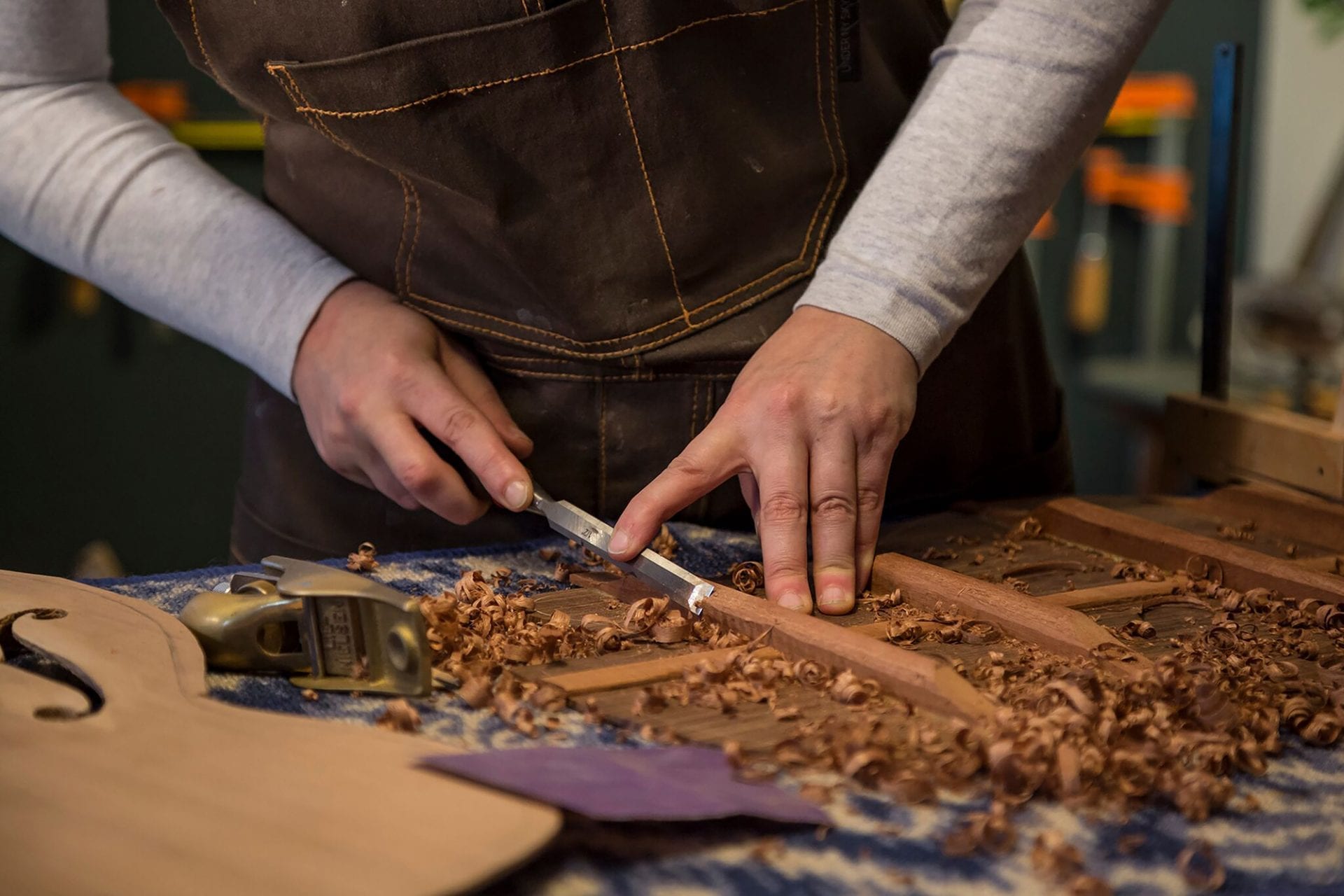





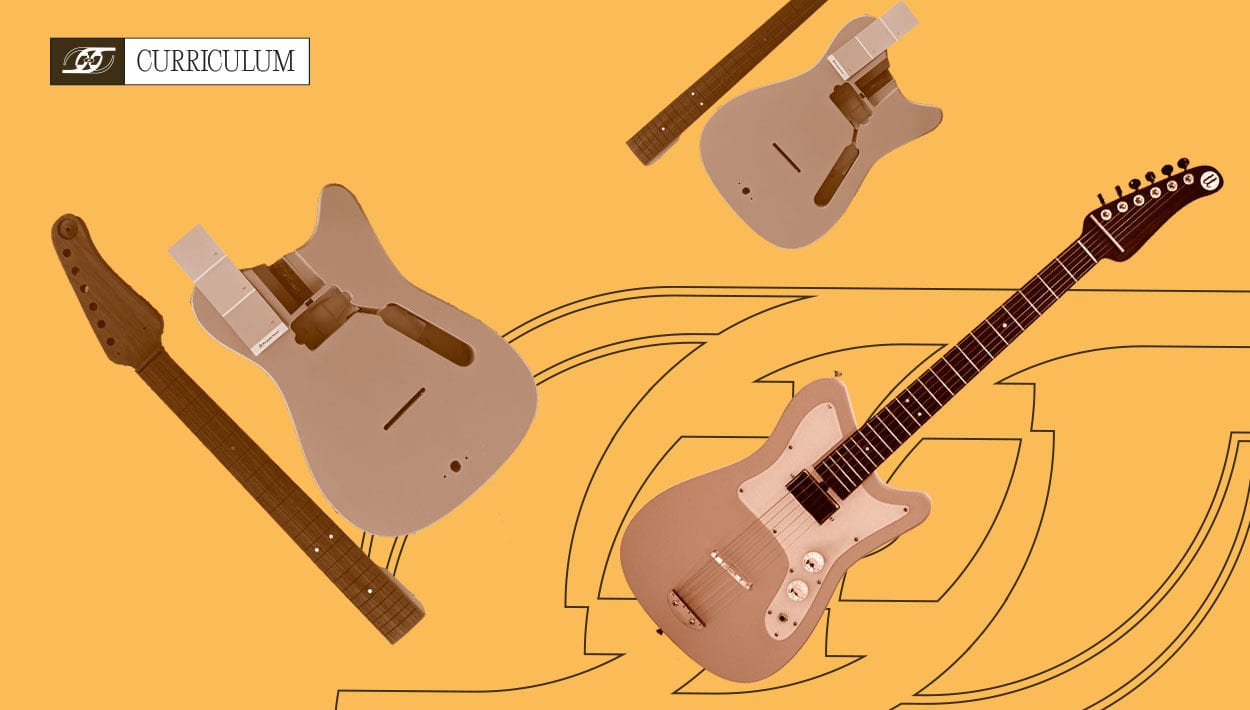
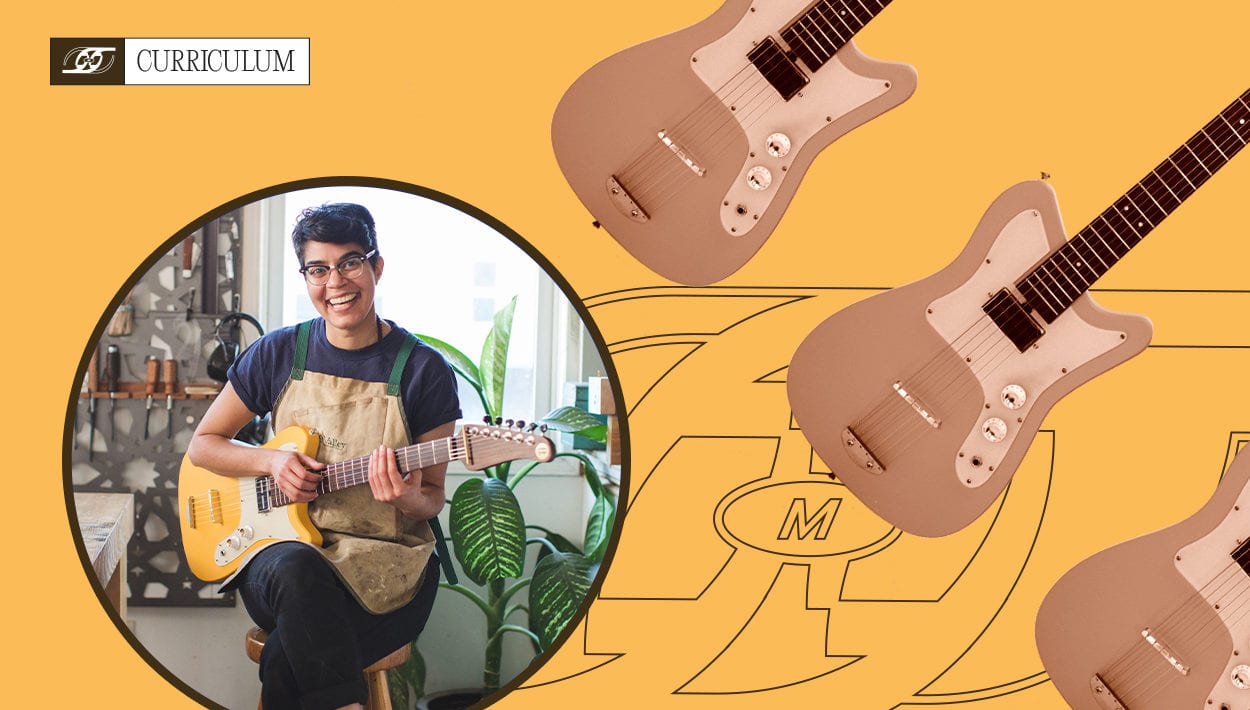






Comments
[…] E. Jayne Henderson makes custom acoustic guitars with a focus on smaller bodies as well as ukuleles with local, sustainable wood. This second generation builder is the daughter of Wayne Henderson, the luthier who Allen St. John wrote about in Clapton’s Guitar: Watching Wayne Henderson Build the Perfect Instrument. Wayne runs a humble and humane luthier shop in the hills of Rugby, VA, where rock stars and ordinary folks alike wait the same length of time for their guitars to be finished—but when they are, it’s extraordinary. Henderson got the building bug after first pursuing a career in environmental law, and finding that she was drawn strongly to the workshop. Her designs tend to emulate pre-war Martin styles. Where her dad specializes in dreadnoughts, she focuses more on smaller body shapes. […]
Pingback by She Shreds Media on June 12, 2020 at 11:44 am